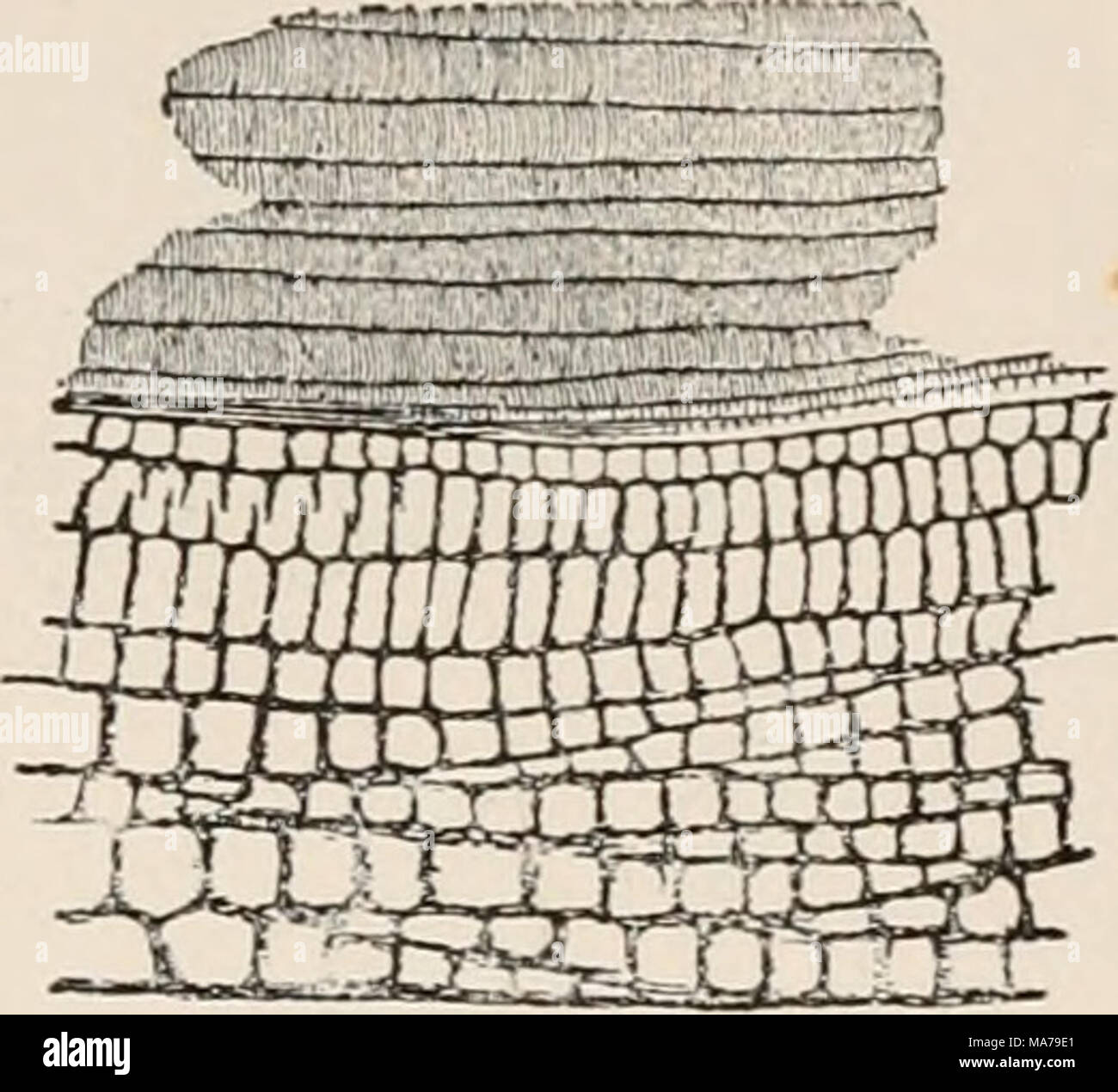. Electro-physiology . FIG. 240.—a, Portion of several superposed prisms of Gymnotus (two wide compartments below). (Pacini.) b, L.S. through prisms of Gynmotus, wide and narrow compartments. (Du Bois- Reymond.) bisected electrical plate (Fig. 241). With regard to the position and mode of attachment of the latter, there is a fundamental difference between Pacini and M. Schultze (31), as appears from the two figures (241, a, b). While Pacini holds that the plates depend freely in the compartment, and are attached only at the lon- gitudinal septa, Schultze maintains that each transverse partitio

Image details
Contributor:
The Bookworm Collection / Alamy Stock PhotoImage ID:
MA79E1File size:
14.3 MB (454.8 KB Compressed download)Releases:
Model - no | Property - noDo I need a release?Dimensions:
2346 x 2130 px | 39.7 x 36.1 cm | 15.6 x 14.2 inches | 150dpiMore information:
This image is a public domain image, which means either that copyright has expired in the image or the copyright holder has waived their copyright. Alamy charges you a fee for access to the high resolution copy of the image.
This image could have imperfections as it’s either historical or reportage.
. Electro-physiology . FIG. 240.—a, Portion of several superposed prisms of Gymnotus (two wide compartments below). (Pacini.) b, L.S. through prisms of Gynmotus, wide and narrow compartments. (Du Bois- Reymond.) bisected electrical plate (Fig. 241). With regard to the position and mode of attachment of the latter, there is a fundamental difference between Pacini and M. Schultze (31), as appears from the two figures (241, a, b). While Pacini holds that the plates depend freely in the compartment, and are attached only at the lon- gitudinal septa, Schultze maintains that each transverse partition wall (Q) coheres with the posterior surface of the corresponding plate, so that there is a space only in front of, and not behind it. Both anterior and posterior surfaces of the plate are thickly set with papilla; (" villi, " M. Schultze), behind which there are posteriorly, thorn-like processes (prolungamenti spiniformi, Pacini), which extend to the posterior partition wall, and are attached there. Schultze failed to discover the latter, while Sachs confirmed the observations of Pacini, as also for the cleavage of the plates (as observed by the latter), into an anterior and a posterior half. He regarded the papilla with their so-called " nuclei" (known later